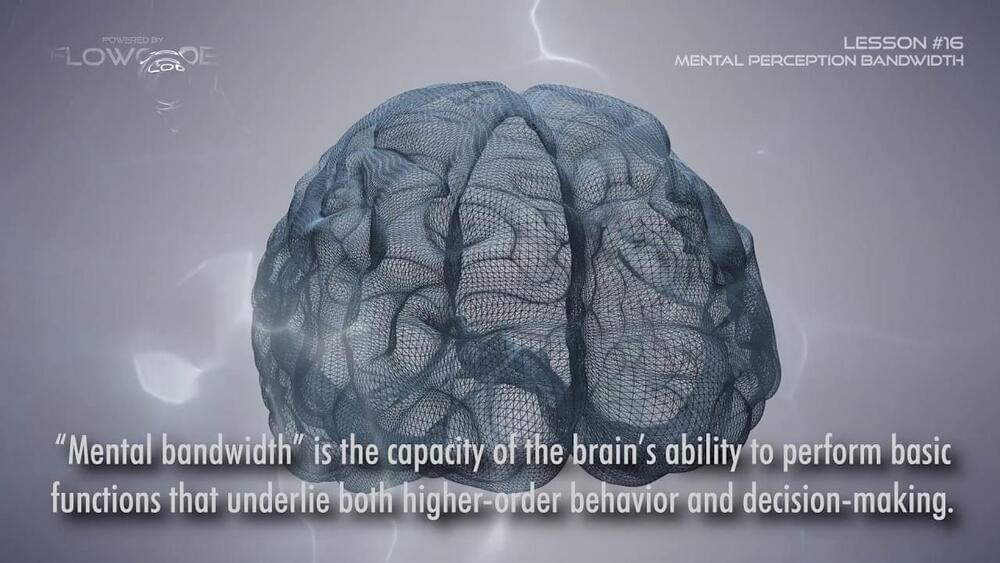Oct 2, 2023
Intel Announces Sierra Forest Xeon CPU With 288 Cores
Posted by Shailesh Prasad in category: computing
The multi-core behemoth uses two chiplets, doubling the previously revealed core capacity for this 2024 CPU.
The multi-core behemoth uses two chiplets, doubling the previously revealed core capacity for this 2024 CPU.
NVIDIA “Huang’s Law” is the primary catalyst for driving chip performance and efficiency to over 1000x in less than a decade. For NVIDIA, Huang’s Law is the fundamental approach that moves beyond traditional chip speedup fundamentals such as Moore’s Law which had dominated the tech industry in the past.
Huang’s Law To Dominate The Future For NVIDIA, Chip Shrinking In No Way Defines The Increment in Performance
CERN’s data store has now crossed the remarkable capacity threshold of one exabyte, meaning that CERN has one million terabytes of disk space ready for data!
CERN’s data store not only serves LHC physics data, but also the whole spectrum of experiments and services needing online data management. This data capacity is provided using 111 000 devices, predominantly hard disks along with an increasing fraction of flash drives. Having such a large number of commodity devices means that component failures are common, so the store is built to be resilient, using different data replication methods. These disks, most of which are used to store physics data, are orchestrated by CERN’s open-source software solution, EOS, which was created to meet the LHC’s extreme computing requirements.
“We reached this new all-time record for CERN’s storage infrastructure after capacity extensions for the upcoming LHC heavy-ion run,” explains Andreas Peters, EOS project leader. “It is not just a celebration of data capacity, it is also a performance achievement, thanks to the reading rate of the combined data store crossing, for the first time, the one terabyte per second (1 TB/s) threshold.”
YouTube channel Moore’s Law Is Dead leaked two new allegedly official AMD slides detailing key specifications and IPC targets for Zen 5 and Zen 6. The new slides report that Zen 5 will be a significant architectural overhaul over Zen 4, targeting 10 to 15% IPC improvements or more. Zen 5 will also reportedly incorporate 16 core CCXs for the first time. Before we go much further, we’ll need to sprinkle a healthy amount of salt on this report.
A new leak has revealed highly in-depth architectural details about AMD’s Zen 5 and Zen 6 CPU architectures, including core architectural improvements and IPC gains.
This NISQ era of quantum computing is also the age where multiple approaches to quantum emerge. It’s akin to the moment before we decided to follow mostly through the x86 path. New research on fluxoni.
Nvidia’s high-end RTX 5,000 Ada graphics cards for professionals comes to market, with a configuration sporting 32GB of memory on a 256-bit bus, but using AD102 rather than AD103: more cores, less VRAM.
I have to share this because it is a gem. My Kenyan business is gemstones 🙄 because Kenya is not far from Tanzanite. Anyways, here is free software for all you video creators. If you want to pay for it, it is $300 for the studio version. The same company also makes hardware for color correction, so you don’t drag a mouse you twist knobs.
Professional video editing, color correction, visual effects and audio post production all in a single application. Free and paid versions for Mac, Windows and Linux.

Hey and we are back … this is Max Flow and we will get to know more about the information limitations of psyche.
Neurons are living cells with a metabolism; they need oxygen and glucose to survive, and when they’ve been working hard, we experience fatigue. Every status update we read on social media, every tweet or text message we get from a friend, is competing for resources in our brains.
Continue reading “Mental perception bandwidth — FlowCode Lesson #16 / Flow state training” »
A research group led by Professor Kenji Ohmori at the Institute for Molecular Science, National Institutes of Natural Sciences are using an artificial crystal of 30,000 atoms aligned in a cubic array with a spacing of 0.5 micron, cooled to near absolute zero temperature. By manipulating the atoms with a special laser light that blinks for 10 picoseconds, they succeeded in executing quantum simulation of a model of magnetic materials.
Their novel “ultrafast quantum computer” scheme demonstrated last year was applied to quantum simulation. Their achievement shows that their novel “ultrafast quantum simulator” is an epoch-making platform, as it can avoid the issue of external noise, one of the biggest concerns for quantum simulators. The “ultrafast quantum simulator” is expected to contribute to the design of functional materials and the resolution of social problems.
Their results were published online in Physical Review Letters.

Pat Bennett’s prescription is a bit more complicated than “Take a couple of aspirins and call me in the morning.” But a quartet of baby-aspirin-sized sensors implanted in her brain are aimed at addressing a condition that’s frustrated her and others: the loss of the ability to speak intelligibly. The devices transmit signals from a couple of speech-related regions in Bennett’s brain to state-of-the-art software that decodes her brain activity and converts it to text displayed on a computer screen.
Bennett, now 68, is a former human resources director and onetime equestrian who jogged daily. In 2012, she was diagnosed with amyotrophic lateral sclerosis, a progressive neurodegenerative disease that attacks neurons controlling movement, causing physical weakness and eventual paralysis.